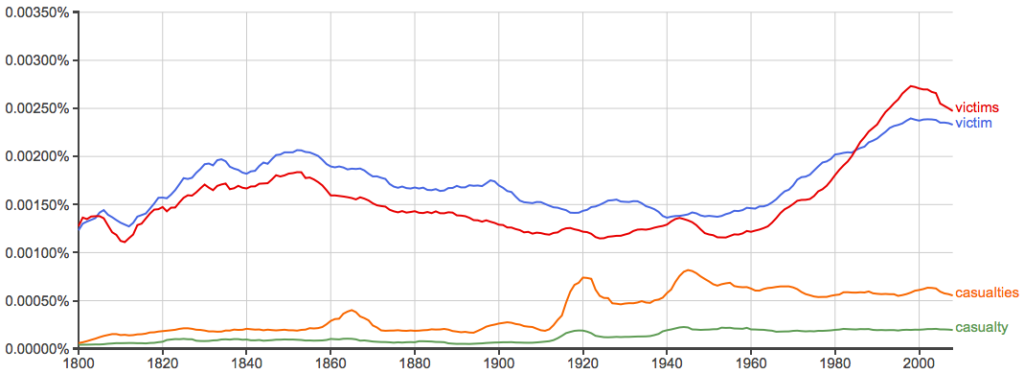Ever wonder how common/acceptable certain words have been in English writing over the past couple centuries? Google Ngram Viewer can give you a rough idea. For this first installment, I look at two correlative concepts–love and hate–and their epitomic activities–sex and murder–since 1800. Whether the below chart represents their relative popularity over the past couple centuries or just the willingness of publishers to allow folks to write about them doesn’t seem all that important. Either possibility is telling.

As you can see, love has remained popular over the past two centuries, though its declining popularity suggests that people have been finding other things to write abut since 1800. Hate seems to have remained pretty consistent (slow and steady wins the race, kids). The real competition is between sex and murder. Clearly, murder was quite popular with the Victorians, but sex has been winning since roughly 1910.
At first I thought murder’s decline could be attributable to its reclassification–for instance, as justified homicide or some iteration of “killing in the name of ____”. The below Ngram does’t bear that out, so my hypothesis is that it’s just more acceptable to write about sex today than it was in the 19th Century. Writers probably called it “coupling” or “lovemaking” or “feet washing” or some other such nonsense back then.
